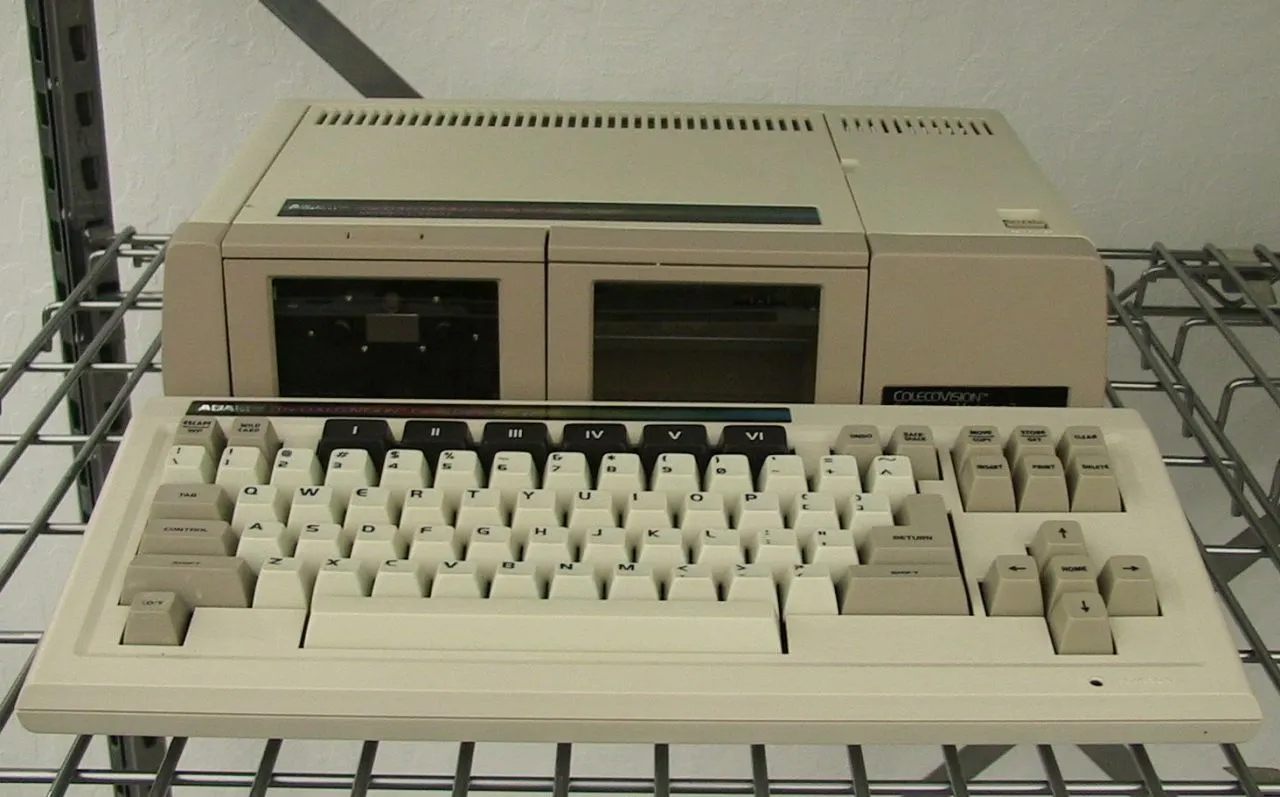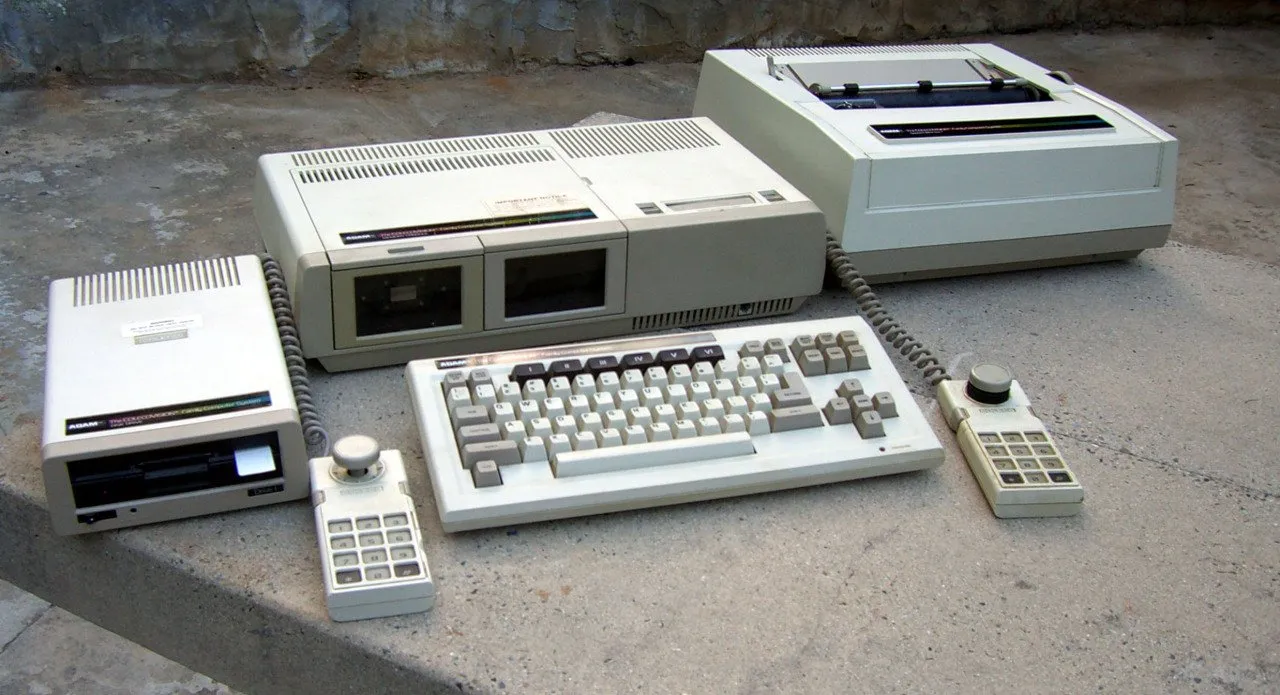
On the heels of the video game crash of 1982/83 there was the home computer boom and price war initiated by Commodore. While Commodore's price war was aimed mostly at Texas Instruments there were other casualties as well. The Coleco Adam was somewhat a victim of this but it was more a victim of poor quality control and poor design decisions in its rush to market.

The Coleco Adam was announced in the Summer of 1983. The way it was to be sold was somewhat unique in that it was only available as a package that included a printer, and it was literally in one package...a single huge box. A custom cassette drive was also built in to serve as the primary storage mechanism and a second could be added. However, the announced price was very competitive with anything on the market at that time. You could also turn you ColecoVision game system into an ADAM computer with the purchase of Expansion Module #3. This consisted of the memory unit (tape drives and RAM), a keyboard and printer. Just add your ColecoVision and the system was complete.
Reality did not quite live up to the hype. The ADAM was delayed multiple times and instead of an August 1983 release, it was not available until October. Even then, it was only in very limited quantities. To make matters worse, a large number of the initial units proved defective and the return rate was extremely high.
While most of the production problems were resolved in the following months, the high initial defect rate combined with some questionable design decisions and problems led to the ADAM having a poor reputation from which it was never to recover. First, the entire system was powered through the printer so the system could not function without the included printer and if something went wrong with the printer, the whole system was useless. Second, Coleco made the decision to use tape based storage. While their custom "datapacks" were faster than standard cassettes and stored more than most disks of the time, their reliability was not as good and they were still much slower than disks. Finally, because of an electromagnetic surge on startup, any media left in or near the drive or printer when the system was powered on could be erased.
The hardware consisted of:
- CPU: Zilog Z80A processor running at 3.58MHz
- RAM: 64KB
- Graphics: TMS9928A (similar to the graphics chip in the TI-99/4A)
- VRAM: 16KB
- Sound: SN76489AN (same as TI-99/4A)
- Storage: Digital Data Pack (custom cassette) - 256KB
Here's the full commercial the gif at the top comes from:
Read more: https://www.megalextoria.com/wordpress/index.php/2017/08/13/the-coleco-adam/
